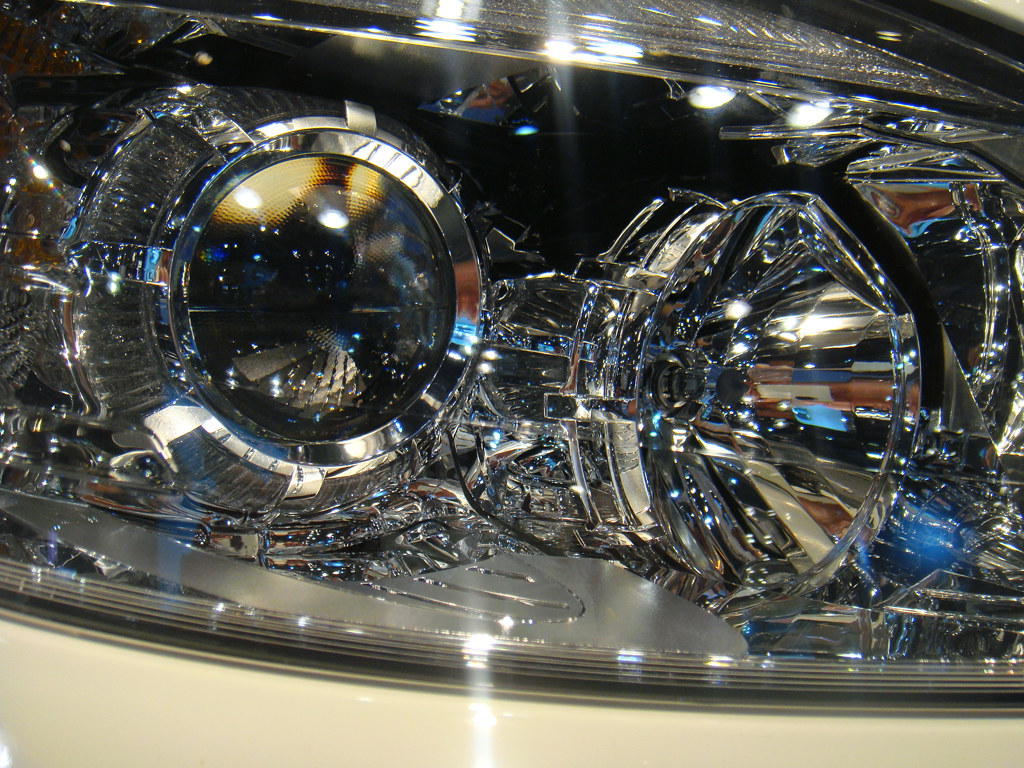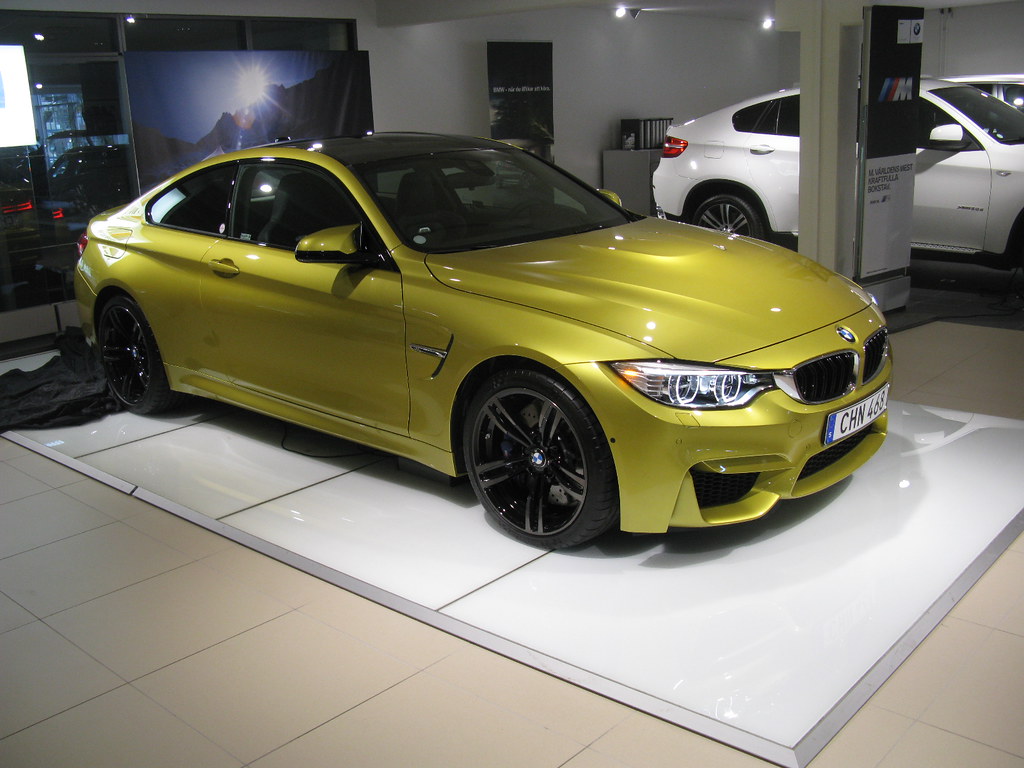
When embarking on the journey of purchasing a used car, consumers are often swayed by initial impressions, attractive pricing, or sleek designs. However, the true value and long-term cost of ownership are often hidden beneath the surface, revealed only through the lens of those who know vehicles inside and out: seasoned mechanics. These professionals, with their hands-on experience, offer an unparalleled perspective on which cars genuinely stand the test of time and which ones are destined to become money pits.
Mechanics observe firsthand the patterns of reliability, the common failure points, and the financial toll certain models inflict upon their owners. Their insights cut through marketing hype, offering a clear-eyed assessment of a vehicle’s ability to hold up once the miles accumulate. This real-world experience forms the basis for their recommendations, highlighting models that prove dependable and those that consistently leave owners frustrated and burdened with hefty repair bills.
This guide serves as a crucial resource for any used car shopper, aiming to equip you with the knowledge to make informed decisions and steer clear of costly mistakes. We delve into five specific used car models that mechanics frequently caution buyers against, models that may appear tempting initially but are notorious for significant long-term ownership nightmares. Our goal is to empower you to avoid the vehicles that are infamous in repair shops for doing the exact opposite of what you want: performing reliably.

1. **BMW 3 Series (2006–2013, E90 Generation)**The BMW 3 Series, particularly the E90 generation spanning from 2006 to 2013, has long been a symbol of accessible luxury and engaging driving dynamics. Its sophisticated engineering and premium features often attract used car buyers seeking an elevated experience without the new car price tag. However, independent mechanics across the board paint a starkly different picture, frequently advising against higher-mileage examples due to a laundry list of recurring and expensive problems.
At the heart of many E90 ownership nightmares are its engines, specifically the N52, N54, and N55 powerplants. These engines are known for persistent issues that include leaking valve cover gaskets, which can lead to oil loss and other complications if neglected. Furthermore, failures in critical components like water pumps and VANOS solenoids are alarmingly common, often requiring significant shop time and costly replacement parts.
For those equipped with turbochargers (N54/N55), additional headaches often arise, such as high-pressure fuel pump failures, which can cause erratic performance and stalling. Turbo wastegate rattle, a distinct and irritating noise, is another frequent complaint, signaling wear within the turbocharger system. Carbon build-up, especially in direct-injected engines, also necessitates expensive cleaning procedures to restore performance and efficiency.
Beyond engine woes, the E90 generation is also plagued by common electrical gremlins that can manifest in various ways, impacting everything from window regulators and central locking systems to dashboard components. Mechanics often find themselves performing major repairs on these cars well before they reach the 150,000-mile mark. The combined cost of parts and specialized labor for even routine maintenance, such as oil changes and brakes, far exceeds that of non-luxury brands, making the overall cost of ownership prohibitively high for many.
Ultimately, while the E90 3 Series delivers on its promise of performance and brand appeal, mechanics view it as a prime example of a car that drives wonderfully but relentlessly punishes owners over time. Many examples end up abandoned or sold off due to owners’ inability to justify the ongoing repair expenses. For those seeking a reliable used luxury sedan, mechanics strongly suggest looking elsewhere, as this generation of the 3 Series is widely considered a mechanical minefield.
Car Model Information: 2021 Honda Accord EX-L 1.5T
Name: BMW 3 Series
Manufacturer: BMW
Production: 1975–present
Class: Compact executive car
Predecessor: BMW 02 Series
Categories: 1970s cars, 1980s cars, 1990s cars, 2000s cars, 2010s cars
Summary: The BMW 3 series is a line of compact executive cars manufactured by the German automaker BMW since May 1975. It is the successor to the 02 series and has been produced in seven generations.
The first generation of the 3 Series was only available as a 2-door saloon; the model range expanded to include a 4-door saloon, 2-door convertible, 2-door coupé, 5-door estate, 5-door liftback (“Gran Turismo”; discontinued in 2019) and 3-door hatchback body styles. Since 2013, the coupé and convertible models have been marketed as the 4 Series; these styles no longer being included in the 3 Series.
The 3 Series is BMW’s best-selling model line, accounting for around 30% of the BMW brand’s annual total car sales, and has won numerous awards throughout its history. The M version of the 3 series, M3, debuted with the E30 M3 in 1986.
Get more information about: BMW 3 Series
Buying a high-performing used car >>>
Brand: BMW Model: 3 Series
Price: $19,900 Mileage: 81,000 mi.
Read more about: Mechanics’ Honest Verdict: 6 Used Car Models You Should Absolutely Avoid Buying for Long-Term Peace of Mind

2. **Mini Cooper (2007–2015)**The Mini Cooper, particularly the second-generation models produced from 2007 to 2015, captivates buyers with its distinctive retro styling, agile “go-kart” handling, and surprisingly upscale interiors. It embodies a unique blend of personality and charm, making it a highly desirable choice for those seeking a fun and compact premium car. Yet, beneath its undeniably cute facade lies a notorious reputation for catastrophic unreliability, a fact quickly confirmed by any experienced mechanic.
The most significant and recurring problems in these Minis originate from the turbocharged 1.6L engine, which was standard in Cooper S and John Cooper Works (JCW) models. This engine is infamous for a host of severe issues that can quickly turn a joyful ownership experience into a financial nightmare. Common complaints include excessive carbon buildup, which restricts airflow and reduces performance, and critical timing chain tensioner failures that can lead to catastrophic engine damage if not addressed promptly.
Further compounding the engine’s unreliability are frequent water pump leaks and cracks in the thermostat housing, leading to coolant loss and overheating risks. Many of these serious issues tend to manifest prematurely, often before the 80,000-mile mark, resulting in repair costs that can easily rival or even surpass the vehicle’s market value. These factors make the 1.6L turbocharged engine a major red flag for mechanics and savvy used car buyers.
Adding to the long-term headaches, transmission problems are also prevalent. Earlier base models with CVT automatics are particularly prone to issues, while even manual transmission cars frequently suffer from failing clutches. Electrical problems, ranging from malfunctioning power locks to frustrating infotainment system bugs, further contribute to the Mini Cooper’s reputation as a high-maintenance vehicle, despite its fun-loving image.
Mechanics consistently warn prospective buyers away from these used Minis unless they are dedicated hobbyists prepared to perform their own repairs or are financially capable of budgeting for frequent and expensive shop visits. The tightly packaged engine bay and complex engineering make many repairs labor-intensive and, consequently, pricier. While a used Mini might seem like an enticing bargain at first glance, that low initial price frequently comes with a significantly higher cost in ongoing repairs, frustration, and specialized parts in the long run.
Car Model Information: 2019 MINI Countryman Cooper S ALL4
Categories: All set index articles, Articles with short description, Set index articles on cars, Short description is different from Wikidata
Summary: Mini Cooper may refer to:
Performance Cars of the original Mini series with uprated drive train and brakes, called the “Mini Cooper”, made by the British Motor Corporation and also the successors 1961–1971, and 1990–2000
Cars of the Mini (marque), including several different models produced by BMW since 2000 with the “Mini Cooper” title:
Mini Hatch, introduced in early 2000, second generation from 2006, third generation from 2014, and fourth generation from 2024, changing the model name to MINI Cooper.
Mini Clubman (2007–2024)
Mini Countryman
Mini Coupé (2011–2015) and Roadster (2012–2015)
Mini Paceman (2012–2016)
Mini Aceman
Get more information about: Mini Cooper
Buying a high-performing used car >>>
Brand: Mini Model: Cooper
Price: $17,963 Mileage: 66,915 mi.
Read more about: Mechanics’ Honest Verdict: 6 Used Car Models You Should Absolutely Avoid Buying for Long-Term Peace of Mind

3. **Dodge Avenger (2008–2014)**The Dodge Avenger, manufactured between 2008 and 2014, often presents itself as a tempting used car option, thanks to its assertive, muscular styling, surprisingly spacious interiors, and a relatively low price point on the secondary market. It appeals to buyers looking for a midsize sedan with a bit more flair than its often-mundane competitors. However, any experienced mechanic will offer a unanimous chorus of advice: avoid this vehicle.
Beneath its aggressive exterior, the Avenger consistently ranks among the most problematic midsize sedans of its era. A primary source of frustration for owners and mechanics alike lies under the hood. The base 2.4L “World Engine” is widely known for its propensity for excessive oil consumption, overheating issues, and premature head gasket failure, which can lead to catastrophic engine damage if not caught in time. These issues significantly undermine its reliability.
Even more concerning was the optional 2.7L V6, which developed a notorious reputation for sludge buildup, a critical flaw that could lead to the engine’s complete demise well before reaching 100,000 miles. While the later-introduced 3.6L Pentastar V6 was generally more reliable, it was not entirely immune to problems, with common complaints including rocker arm ticking and electronic throttle issues, adding to the Avenger’s mechanical woes.
Further compounding the Avenger’s reliability issues are widespread transmission problems, particularly with the 4-speed automatic units, which are known for rough shifting and early failure. Weak suspension components also contribute to a less-than-ideal ride quality and require frequent attention. Coupled with subpar interior quality that often deteriorates rapidly, many Avengers begin to fall apart significantly before reaching the 150,000-mile mark, indicating a fundamental lack of durability.
Mechanics frequently describe the Dodge Avenger as a vehicle that simply “wasn’t built to last.” Even seemingly basic repairs, such as replacing an alternator or a water pump, can become unnecessarily labor-intensive due to its design. It’s not merely the cost of individual repairs, but the persistent and varied pattern of failures that makes the Avenger such a risky and regret-inducing purchase. For anyone seeking a dependable and affordable used sedan, mechanics emphatically advise that there are far superior choices available on the market than the bold-looking, but ultimately troubled, Avenger.
Car Model Information: 1970 Dodge Challenger Base
Name: Dodge Avenger
Caption: 2012 Dodge Avenger sedan
Class: Sport compact,Mid-size car
Manufacturer: Dodge
Production: 1994–2000,2007–2014
ModelYears: 1995–2000,2008–2014
Successor: Chrysler 200,Dodge Dart (PF)
Categories: 2000s cars, 2010s cars, All articles with dead external links, Articles with dead external links from April 2015, Articles with short description
Summary: The Dodge Avenger is a front-wheel drive, mid-sized sedan that was marketed by Dodge. The Avenger made its North American debut in 1994 for the 1995 model year as a coupe that was produced until 2000. The model name was reintroduced to the market as a four-door sedan in 2007 for the 2008 model year. The Dodge Avenger name was used on the South African market Hillman Avengers in 1975 and 1976.
The 2014 model year marked the end of Avenger production as the mid-sized models for both the Dodge and Chrysler brands were consolidated into the new Chrysler 200 introduced for the 2015 model year while Dodge received the new compact Dart.
Get more information about: Dodge Avenger
Buying a high-performing used car >>>
Brand: Dodge Model: Avenger
Price: $59,999 Mileage: 46,457 mi.
Read more about: Mechanics’ Honest Verdict: 6 Used Car Models You Should Absolutely Avoid Buying for Long-Term Peace of Mind

4. **Fiat 500 (2012–2017)**When the Fiat 500 made its debut in the U.S. market, it arrived with a refreshing dose of quirky Italian charm, compact city-friendly dimensions, and a distinctive retro design that immediately set it apart from typical American and Asian offerings. Its playful advertising and unique aesthetic promised a fun, European driving experience. However, this appealing exterior quickly proved to be a facade, as the Fiat 500, particularly models from 2012 to 2017, rapidly earned a reputation as a frequent visitor to repair shops, becoming shorthand among mechanics for a vehicle to “avoid at all costs.”
The most significant overarching issue with the Fiat 500 is its pervasive lack of build quality and reliability across virtually all components. The primary culprit under the hood is the 1.4L MultiAir engine, which, despite its small size and fuel efficiency, is notoriously finicky. It suffers from a litany of problems, including persistent oil leaks, valve actuator issues, and a frustrating tendency to illuminate the check engine light with alarming regularity. This engine, mechanics observe, is simply not engineered for long-term durability.
Transmission woes further exacerbate the ownership experience. The automatic transmission, especially the dual-clutch automatic found in larger variants like the 500L, is infamous for its hard shifts, hesitation, and premature failure. Even models equipped with manual transmissions are not immune, often experiencing clutch problems that demand costly repairs. These powertrain issues alone are enough to deter many potential buyers and keep mechanics busy.
Beyond the engine and transmission, the Fiat 500’s interior trim components tend to fall apart quickly, signaling poor material quality and assembly. Electrical systems are prone to frequent glitches, and crucial suspension components wear out well before they should, compromising ride quality and safety. Adding insult to injury, replacement parts for these vehicles can be surprisingly difficult to source, and their installation is often labor-intensive, leading to significantly higher repair bills than expected for a compact car.
While the Fiat 500 might initially appear as an affordable and enjoyable used option, mechanics universally describe it as a car that was never designed to age gracefully. Many repair shops are so familiar with its consistent issues and the difficulty in servicing them that they even decline working on them. For those seeking a city car that combines personality with genuine dependability, mechanics unequivocally advise against the charming but ultimately very costly Fiat 500 in the long run.
Car Model Information: 2013 FIAT 500 Abarth
Name: Fiat 500
Caption: 1970 Fiat 500 L
Aka: Puch 500
Manufacturer: Fiat Automobiles
Production: 1957–1975,3,893,294 units
Assembly: Turin,Desio
Designer: Dante Giacosa
Class: City car
BodyStyle: ubl
Layout: Rear-engine, rear-wheel drive layout
Doors: Suicide door,Car door#Conventional
Related: Autobianchi Bianchina,NSU/Fiat Weinsberg 500,Vignale Gamine,Autobianchi Giardiniera
Engine: Cubic centimetre,499 cc I2,594 cc I2
Transmission: Manual transmission
Wheelbase: {{convert,1840,mm,in,1,abbr=on
Abbr: on
Length: 2970 mm
Width: 1320 mm
Height: 1320 mm
Weight: 499 kg
Predecessor: Fiat 500 “Topolino”
Successor: Fiat 126,Fiat 500 (2007)
Sp: uk
Categories: 1960s cars, 1970s cars, All Wikipedia articles written in British English, All articles with unsourced statements, Articles containing Italian-language text
Summary: The Fiat 500 (Italian: Cinquecento, pronounced [ˌtʃiŋkweˈtʃɛnto]) is an economy / city car that was manufactured and marketed by Fiat Automobiles from 1957 until 1975. It was sold as a two-door semi-convertible or saloon car and as a three-door panel van or estate car.
Launched as the Nuova (new) 500 in July 1957, as a successor to the 500 “Topolino”, it was an inexpensive and practical small car. Measuring 2.97 metres (9 feet 9 inches) long, and originally powered by a rear-mounted 479 cc two-cylinder, air-cooled engine, the 500 was 24.5 centimetres (9.6 inches) smaller than Fiat’s 600, launched two years earlier, and is considered one of the first purpose-designed city cars.
In 1959, Dante Giacosa received a Compasso d’Oro industrial design prize for the Fiat 500. This marked the first time a Compasso d’Oro was awarded to an automotive manufacturer.
Get more information about: Fiat 500
Buying a high-performing used car >>>
Brand: Fiat Model: 500
Price: $10,995 Mileage: 35,183 mi.
Read more about: Mechanics’ Honest Verdict: 6 Used Car Models You Should Absolutely Avoid Buying for Long-Term Peace of Mind

5. **Chevrolet Cruze (2011–2016)**The Chevrolet Cruze, introduced by GM as a global compact sedan, aimed to compete directly with well-established rivals like the Honda Civic and Toyota Corolla by offering stylish design and improved efficiency. However, the early models, specifically those manufactured between 2011 and 2016, quickly garnered a poor reputation among mechanics. This was due to a long and consistent list of reliability concerns and premature component failures, making the Cruze, despite its initial appearance as a smart used buy, anything but reliable behind the scenes.
The primary source of these widespread problems is the 1.4L turbocharged engine. This powerplant is notorious for a series of critical failures, including persistent coolant leaks, overheating issues, and the dreaded blown head gaskets. Water pumps also frequently fail prematurely, adding to the engine’s unreliability. Many of these significant issues often begin to manifest surprisingly early in the vehicle’s life, sometimes as soon as 60,000 to 80,000 miles, catching owners off guard.
Mechanics frequently label the Cruze as a “cooling system disaster” due to its particularly faulty thermostat housing and the prevalence of plastic components within the coolant system, which are prone to cracking and leaking. These design flaws lead to a cycle of overheating and subsequent damage, creating a constant headache for both owners and repair technicians. The cost of these recurring cooling system repairs alone can quickly negate any perceived savings from the initial purchase.
Transmission troubles further compound the headaches associated with the Chevrolet Cruze. The 6-speed automatic transmission, in particular, is known for hard shifting and premature failures, with replacement costs being notably steep. These powertrain issues are often accompanied by other significant problems, including poor interior build quality that deteriorates quickly, rapid depreciation in resale value, and persistent electrical problems that can be challenging to diagnose and fix.
Mechanics caution against the Cruze not due to an isolated issue, but because of the sheer volume of small problems that collectively lead to significant expenses and frequent shop visits. Recurring turbo failures, oil leaks, and the constant illumination of check engine lights become a routine part of ownership. While subsequent Cruze models saw some improvements, the early 2011–2016 years were fraught with issues. For used car buyers looking to avoid major repairs and financial strain, mechanics strongly advise skipping the 2011–2016 Chevrolet Cruze, deeming it a gamble simply not worth taking.
While identifying unreliable vehicles is paramount, buying a used car also involves navigating legal and contractual considerations fraught with pitfalls. Even a dependable vehicle can become a source of regret if the purchase agreement is poorly understood or seller obligations aren’t met. Mechanics address reliability; the legal framework tackles fair and secure transactions.
This guide delves into critical legal and contractual aspects every used car buyer must understand. From seller disclosure requirements and the nuances of warranties to fraudulent misrepresentation and options for returns, equipping yourself with this knowledge is essential for protecting your investment and ensuring peace of mind. These are the contractual red flags and protections astute buyers, advised by consumer advocates, prioritize, helping them avoid financial and legal entanglements.
Car Model Information: 2015 Chevrolet Cruze 1LT
Name: Chevrolet Cruze
Caption: 2017 Chevrolet Cruze LT sedan
Manufacturer: General Motors
Aka: unbulleted list
Production: unbulleted list
ModelYears: 2011–2019 (North America),2026 (Middle East)
Class: Compact car
Layout: Front-engine, front-wheel drive
Predecessor: unbulleted list
Successor: unbulleted list
Categories: 2010s cars, 2020s cars, ANCAP small family cars, All articles containing potentially dated statements, All articles with dead external links
Summary: The Chevrolet Cruze is a compact car produced by General Motors from 2008 through 2023. It was designated as a globally developed, designed, and manufactured four-door compact sedan, complemented by a five-door hatchback body variant from 2011, and a station wagon in 2012. The Cruze replaced several compact models, including the Chevrolet Optra which was sold internationally under various names, the Chevrolet Cobalt sold exclusively in North America, and the Australasian-market Holden Astra.
The Cruze was released in 2008 for the South Korean market as the Daewoo Lacetti Premiere prior to the adoption of its international name in 2011, when the Daewoo brand was discontinued. In Australasia, the model was sold between 2009 and 2016 as the Holden Cruze. In 2016, the Cruze sedan was restyled and renamed for the Australasian market as the Holden Astra Sedan, as a sedan complement to the Holden Astra family.
Due to the market shift towards SUVs and decreasing sales, the Cruze has been gradually phased out. Production of the Cruze in South Korea ended in 2018 as part of restructuring of GM Korea, which in turn ceased supply of the Holden Astra Sedan to Australasia. In the United States and Mexico, production ended in 2019, while production in China ended in 2020. Production continued in Argentina until 2023. It was replaced by the Monza in China, which is known as the Cavalier in Mexico.
In 2025, the Cruze was revived as a rebadged Chevrolet Monza for the Middle East.
Previously, the nameplate has been used for a version of a subcompact hatchback car produced under a joint venture with Suzuki from 2001 to 2007, and was based on the Suzuki Ignis.
Get more information about: Chevrolet Cruze
Buying a high-performing used car >>>
Brand: Chevrolet Model: Cruze
Price: $9,662 Mileage: 94,839 mi.
Read more about: Beyond the Hype: 12 Underestimated Coupes That Quietly Redefined Value and Performance
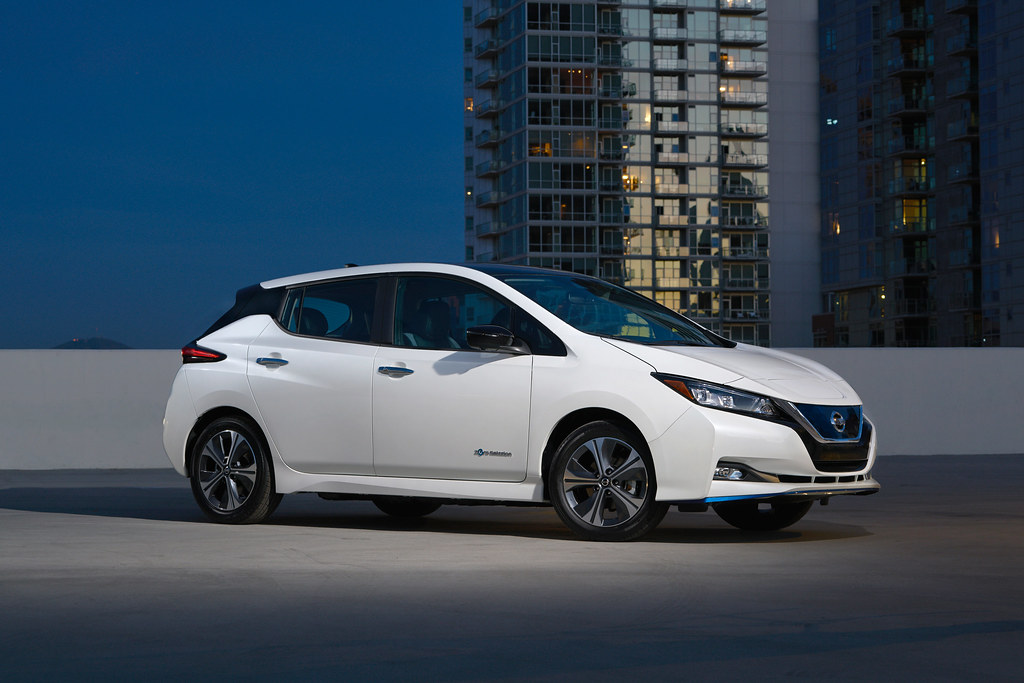
6. **Seller Disclosure Requirements**Understanding a seller’s disclosure obligations is fundamental to a fair used car transaction. These requirements vary by jurisdiction, but generally mandate sellers to provide information on the vehicle’s condition and history, including known defects, previous accidents, and title issues like salvage or flood damage. Failure to disclose such crucial information, when legally mandated, can lead to serious repercussions, potentially including sales rescission or damages for the buyer.
The Federal Trade Commission’s (FTC) Used Car Rule provides vital protection for consumers dealing with dealerships. It requires dealers to display a Buyer’s Guide on used vehicles, stating if the car is sold “as is” or with a warranty. This guide also informs buyers of their right to an independent mechanic’s inspection, a step Consumer Reports consistently recommends. While this FTC rule primarily governs dealer transactions, many state laws impose similar transparency obligations on private sellers, ensuring buyer protection regardless of seller type.
Disputes often arise from perceived lack of transparency or failure to disclose. Buyers discovering significant undisclosed defects may have strong grounds for legal challenge. Disclosure requirements aim to prevent such scenarios, placing the onus on sellers to be upfront. Consumers should meticulously review all disclosure documents and seek written clarification before finalizing a purchase.
Read more about: Don’t Get Scammed: Your Essential Guide to Uncovering a Used Car’s Hidden Salvage Title History
7. **Implied Warranties for Preowned Vehicles**Beyond explicit guarantees, used car buyers are often protected by implied warranties, which legally ensure a vehicle meets minimum quality standards for its intended use. These protections are rooted in the Uniform Commercial Code (UCC), adopted in various forms by most U.S. states. The UCC establishes two main types: the warranty of merchantability, dictating a car must function properly and be reasonably safe, and the warranty of fitness for a particular purpose.
The warranty of fitness applies when a buyer relies on a seller’s expertise for a specific, non-ordinary use. For instance, if a buyer tells a seller they need a car for heavy towing and the seller recommends a model, there might be an implied warranty that the vehicle is fit for that capacity. These implied protections serve as a baseline, assuring buyers that the product is not fundamentally flawed or unsuitable for its basic function.
It is crucial that these implied warranties can be modified or disclaimed. Many used vehicles are sold “as is,” a term that, when properly executed, removes these implied protections. Such a disclaimer must be clearly and conspicuously stated and effectively communicated. Legal disputes often hinge on the clarity and prominence of “as is” clauses. Buyers should always read contracts thoroughly and question any “as is” language to fully comprehend their rights.
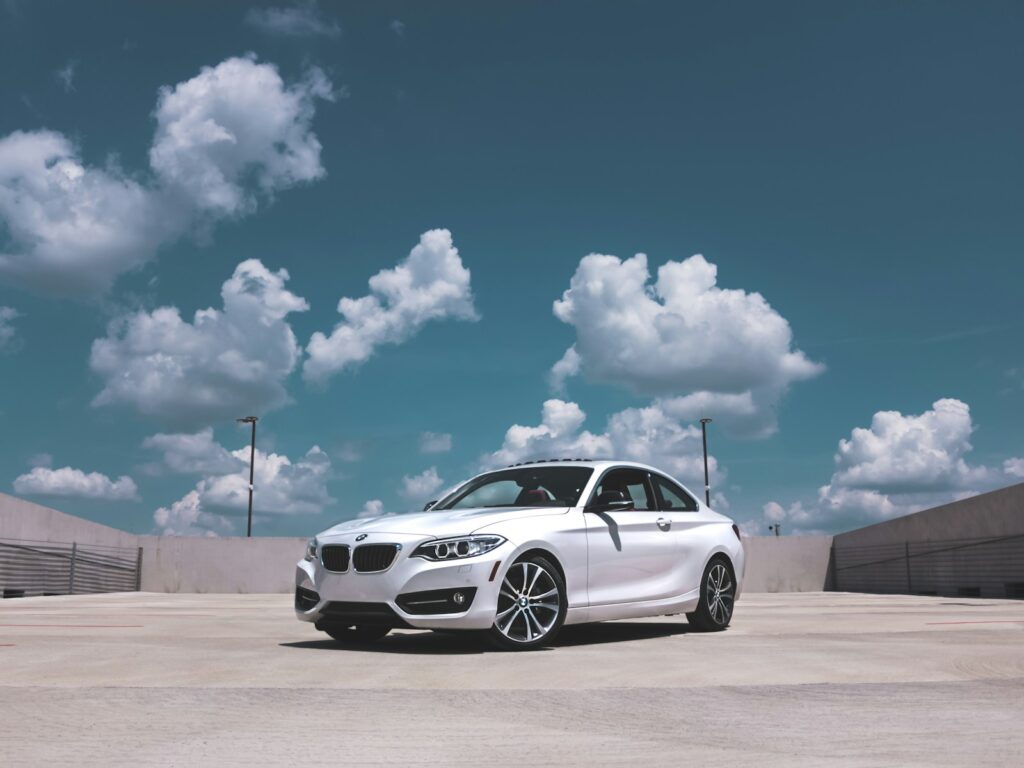
8. **Service Contracts vs Extended Warranties**When seeking added protection for a used vehicle, buyers face two distinct options: service contracts and extended warranties. While both cover repairs and maintenance beyond the manufacturer’s initial offering, their nature and legal frameworks differ. Service contracts, often called “extended service plans,” are agreements purchased separately, outlining specific repair and maintenance coverage for a set period or mileage, typically with deductibles and exclusions.
Extended warranties, in contrast, generally extend the vehicle’s original manufacturer’s warranty, covering specific defects or malfunctions and backed by the manufacturer or a designated administrator. It’s vital that service contracts are regulated by state law, which mandates clear disclosure of terms, limitations, and exclusions. Federal oversight, via the Magnuson-Moss Warranty Act, primarily governs manufacturer warranties, ensuring consumer information, but doesn’t directly cover third-party service contracts.
For any used car buyer, meticulously evaluating the financial implications of both options is crucial. Consumers should scrutinize deductibles, coverage limits, and authorized repair facilities. Understanding what is explicitly covered—and excluded—prevents financial surprises. A thorough comparison against the vehicle’s known reliability and potential repair costs, guided by unbiased advice, is key to deciding if these protections offer genuine value.
Read more about: Navigating the 2025 Car Warranty Changes: A Consumer Reports Guide to Protecting Your Used Car Investment
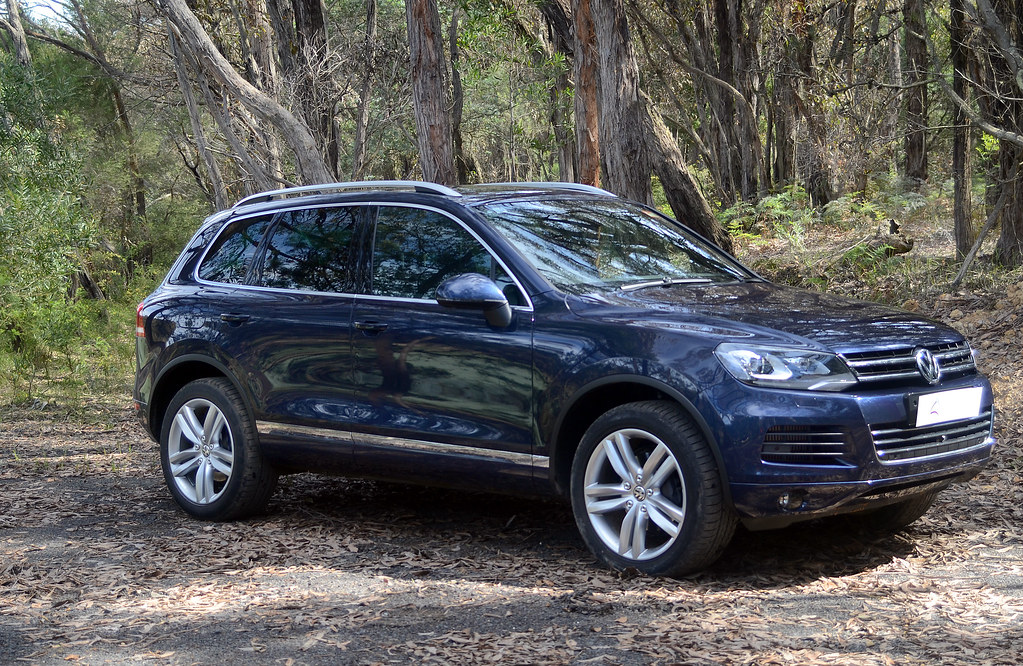
9. **Fraudulent Misrepresentation in Used Car Sales**One of the most egregious pitfalls in used car purchases is fraudulent misrepresentation, occurring when a seller deliberately deceives a buyer about a vehicle’s true condition or history. This calculated dishonesty intends to persuade the buyer into a purchase under false pretenses, often causing substantial financial detriment. Classic examples include odometer tampering, where mileage is illegally rolled back, or actively concealing severe damage like prior flood damage or involvement in a major accident. False statements about a car’s accident history also fall squarely into this category.
Under established common law, buyers who successfully prove fraudulent misrepresentation have significant legal recourse. They may be entitled to rescind the sale entirely, undoing the transaction and recovering their money. Additionally, they can claim monetary damages for any losses incurred due to the deception. To prevail, the buyer typically needs to demonstrate that the seller knowingly made false statements, intended to induce reliance, and that the buyer did rely on them, resulting in financial harm.
Beyond common law, a robust framework of federal and state laws specifically targets deceptive practices in vehicle sales. The Federal Odometer Act (49 U.S.C. § 32701 et seq.) prohibits odometer tampering and false mileage disclosures. Violators face severe penalties, including substantial fines up to $10,000 per violation, potential imprisonment, and treble damages—three times the actual damages—for victims, underscoring the seriousness of this offense.
Many states have also enacted comprehensive consumer protection laws, often called “unfair and deceptive acts and practices” (UDAP) statutes. These laws can provide additional, more expansive remedies for victims, potentially including actual damages, statutory damages, and attorney’s fees. In cases of particularly egregious conduct, some state laws even allow for punitive damages, designed to punish the perpetrator and deter similar future actions. Buyers who suspect fraud should consult an attorney to explore the full range of remedies.
Read more about: Stay Safe, Save Money: A Consumer Reports Guide to Spotting Used Car Fraud Online
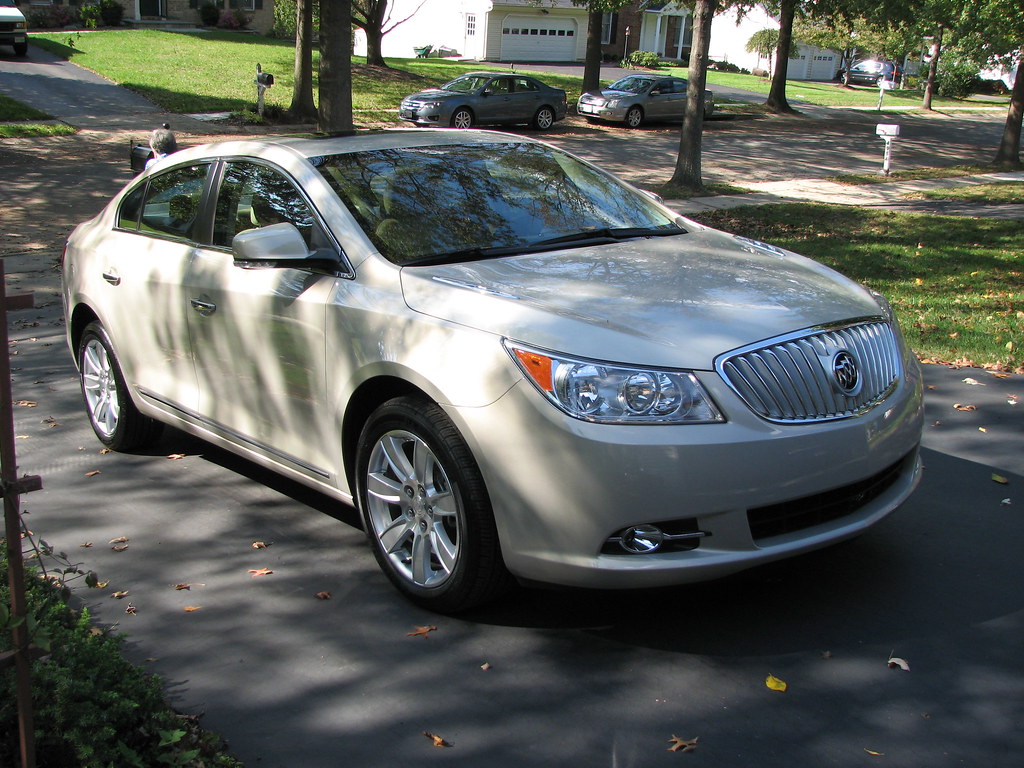
10. **Return and Refund Options**The ability to return a used car or receive a refund, especially within the crucial first 30 days, is rarely standard and largely hinges on the sales contract and state laws. Unlike new cars, used vehicles typically lack a universally mandated “cooling-off” period or federal right to return. Buyers often rely on the seller’s policies or specific state statutes, like “used car lemon laws,” which allow returns for significant defects found shortly after purchase. These lemon laws, however, usually come with strict criteria, often requiring multiple unsuccessful repair attempts before a return or replacement is permitted.
Some dealers, aiming to boost customer satisfaction, may offer their own return policies or satisfaction guarantees. These policies, however, almost always include specific conditions, such as mileage limits within the return period, requirements for the vehicle to remain in its original condition, or the imposition of restocking fees. It is absolutely crucial for buyers to meticulously review the terms of any such return policy before finalizing the purchase, ensuring a clear understanding of their rights and any financial obligations.
Beyond explicit return policies, buyers might find recourse through a breach of contract claim if the seller fails to fulfill the terms stipulated in the sales agreement. This can occur if the vehicle is not delivered as promised or if the seller defaults on commitments like agreed-upon repairs or honoring a warranty. To succeed, the buyer must demonstrate they upheld their side of the agreement and that the seller’s failure directly caused financial harm. Remedies can include rescission of the sale or monetary damages covering repair costs or diminished value. Legal proceedings are often intricate and frequently necessitate legal professional guidance.
In the event of a dispute, various resolution mechanisms offer alternatives to formal litigation, potentially saving time and legal expenses. Mediation involves a neutral third party facilitating negotiations toward a mutually agreeable solution, a non-binding process emphasizing collaboration. Arbitration, conversely, involves a neutral arbitrator issuing a binding decision after hearing both sides. Many car sales contracts, especially from dealerships, include mandatory arbitration clauses, requiring disputes to be resolved through arbitration instead of court.
While arbitration is generally quicker and less formal than traditional litigation, buyers must be aware of its implications. A binding arbitration decision typically limits the buyer’s ability to appeal an unfavorable outcome, and there can be additional costs associated with the process. Understanding these distinct dispute resolution methods is paramount, as they significantly impact the avenues available to a buyer seeking redress and can profoundly influence the final outcome.
Read more about: Unmasking the Markup: Your Essential Guide to Spotting and Avoiding Hidden Car Dealer Fees
Ultimately, securing a reliable used car extends beyond mechanical integrity; it’s about making informed decisions that safeguard your financial well-being and legal rights. By understanding which vehicles mechanics blacklist and diligently navigating the legal landscape of disclosures, warranties, and potential pitfalls, consumers significantly reduce inherent risks. Empowered with this knowledge, you can confidently steer clear of car buying regrets, ensuring your next used vehicle truly serves as a dependable asset, not a source of frustration. In used car purchases, knowledge isn’t just power—it’s paramount for peace of mind.



